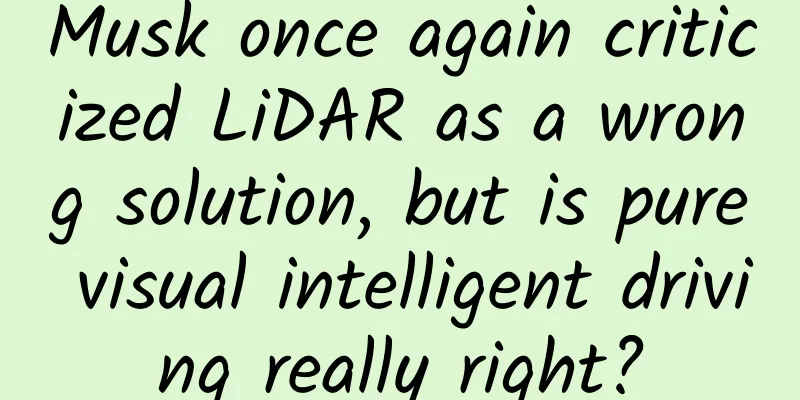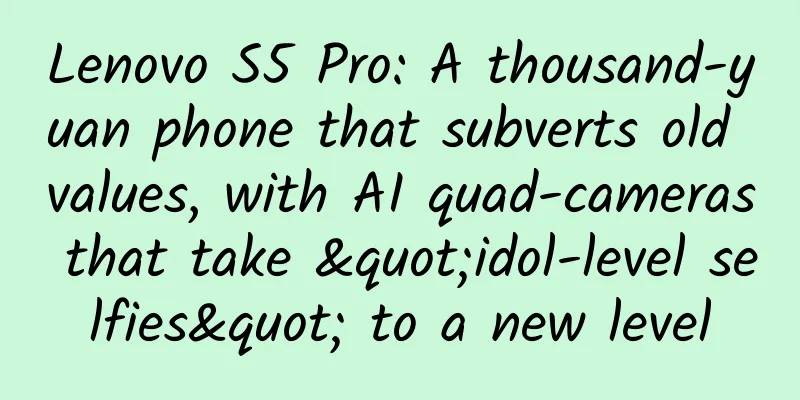Musk once again criticized LiDAR as a wrong solution, but is pure visual intelligent driving really right?

|
Regarding intelligent driving solutions, there have always been different "factions" in the automotive industry. Musk's pure vision and the laser radar that some car companies currently insist on basically represent the two routes of current intelligent driving solutions. Over the years, there has been constant controversy in the automotive industry over whose solution is better. Especially recently, this topic has become a hot topic again because of Musk's public remarks. Recently, Tesla Motors founder Musk once again publicly complained about LiDAR, saying: They are simply the wrong solution for a complex land road system designed for biological neural networks and eyes. Therefore, the only correct general solution is artificial neural networks and cameras. The artificial neural network and camera mentioned by Musk are actually the pure vision intelligent driving solution that he has always advocated. Musk is full of confidence in this solution. Musk argues that pure vision, especially when using explicit photon computing, is much better than a combination of radar and vision because the latter has too much uncertainty—when radar and vision perception disagree, it’s unclear which to believe. Musk also has his own views on the practicality of pure vision. He said that human driving is completely based on vision, and roads are designed for biological neural networks and eyes. Humans do not have organs similar to radar, so a smart car can also imitate humans and rely on vision to become a qualified driver. Based on the trust in pure vision, all Tesla models now use this intelligent driving solution. Tesla's automatic assisted driving system simulates the driving process of human drivers. After the camera collects road condition information and takes real images, the image is reconstructed into a 3D scene through a visual neural network, and the computer analyzes and processes it to make decisions. At present, the pure vision intelligent driving supported by Musk is indeed outstanding. Even in China, where the road conditions are more complicated, its performance is remarkable. The recent "China Intelligent Driving Competition" is undoubtedly the best proof of this. In the "China Intelligent Driving Competition", Jiyue 01 and Xiaopeng P7+, as the only two pure vision models, competed with Huawei, Weilai, Ideal and other laser radar models, and achieved very good results. In Zhongshan, which is not covered by high-precision maps, the Jiyue 01 with AI end-to-end intelligent driving was the only model in the competition that chose the pure visual route, and won the third place with a small score difference. The Xiaopeng P7+ won the fourth place in Zhuhai. Throughout the competition, Jiyue got 8 full marks in 13 sub-items, and the Xiaopeng G6, which ranked first in the total score, only got 6 full marks. Compared with the three laser radar models equipped with the Hongmeng Intelligent Driving System, the Wenjie M7, Avita 11, and Zhijie S7, Jiyue 01 also has an advantage in points. Facts have proven that pure vision-based intelligent driving does have many advantages. It not only saves the cost of LiDAR, but also makes decisions more efficiently because it eliminates the process of integrating LiDAR-sensed information. This means that if car companies want to be technologically advanced and reduce costs and increase efficiency, pure vision solutions obviously have a comparative advantage. Using technology to reduce costs is an important measure for car companies to improve their market competitiveness. It is not difficult to understand why Musk is so supportive of pure visual intelligent driving. On October 11, Tesla released the Cybercab, a Level 4 driverless vehicle that "does not require lidar for perception redundancy." Musk is very confident that Robotaxi can achieve fully autonomous driving with a pure vision solution. In Musk's words, "Using AI and computational vision, you can achieve FSD without supervision without expensive equipment." Of course, Tesla is not the only one that is optimistic about the pure vision solution. Now, many domestic manufacturers are gradually weakening LiDAR and switching to pure vision solutions. For example, Hongmeng Intelligent Driving models such as Jiyue, Xiaopeng Motors' Ledao L60, Deep Blue S07, Zhijie S7, and Xinwenjie M5 have also joined the visual intelligent driving route in 2024. So, does the increase in supporters mean that the LiDAR solution will be replaced by pure vision? Actually, this is not the case. After all, pure vision itself is not perfect. There are also companies that have done a good job in LiDAR solutions, such as Huawei. It is worth noting that even though the pure vision solution has many followers, it is not 100% "perfect". As Yu Chengdong said in the live broadcast, the recognition effect of the pure vision solution will be greatly reduced in bad weather or specific scenarios, and there may even be bugs that the visual camera cannot see at all. In this regard, Yu Chengdong also gave an example. For example, a black car broke down at the entrance of a tunnel. At this time, the visual camera cannot see it at all outside. It can only be seen when it walks up to it. The primary goal of Huawei ADS is to improve safety, so Huawei will firmly use lidar. In other words, pure visual intelligent driving does have its advantages, but if we want to comprehensively consider safety issues, perhaps we still cannot easily give up LiDAR. LiDAR can be used as a perception redundancy and equipped on L4 and L5 autonomous vehicles. This point cannot be truly replaced at present. Although it cannot be replaced, the attitude of various car companies towards de-mapization (de-HD mapping) this year shows that everyone has a clear position in terms of technical thinking. This is a good thing for the entire industry. No matter who will be the final winner, for ordinary users, as long as it can ensure sufficient security, it is good technology. |
>>: Unlimited data traffic is the trend, Wi-Fi may be eliminated
Recommend
Alpine glacier collapse has killed 7 people! Is there any way to stop the melting of glaciers?
On July 3, a high mountain glacier collapsed in t...
Domestic Tesla is about to be exported overseas, and NIO will follow suit and blow the horn to enter Europe
Having solved its capital chain crisis, NIO is ri...
How much does it cost to apply for a 400 phone number for a company? How much does it cost to apply for a 400 phone number?
How much does it cost to apply for a corporate 40...
Development Trends of UI Design Industry in 2019
It goes without saying that UI is an important pa...
Research shows more than two dozen popular iOS apps send user data to third parties
Recently, a new study claims that more than two d...
A veteran operator who achieved tens of millions of app downloads in one year: practical strategies from ordinary operations to top operations!
The operations director who achieved 10 million ap...
Chen Ming's 14-day efficient writing training camp course
Chen Ming's 14-day efficient writing training...
Foxconn will build cars for Fisker, with mass production in 2023 and an annual production capacity of 250,000 vehicles
Recently, Foxconn and Fisker jointly announced th...
Advanced model tree course, solving most learning problems
Advanced model tree course, solving most learning...
How did Panda Mini Class gain nearly one million fans through fission?
Knowledge payment has been very popular in recent...
Three operational insights I gained from a Spring Festival red envelope event
During the Spring Festival, we planned a red enve...
3 things you didn't know about the MacBook Air's demise
Back in 2010, Apple launched a new version of the...
Arrange a tea party in Nanjing and find Xiao Wang
Nanjing tea drinking studio arrangement, Nanjing ...
Yangtze River Porpoise: A Barometer of the Health of Water Ecosystems
As one of the rivers with the richest aquatic bio...
I didn't sweat today, can I skip a shower? The answer is unexpected
It's really hot recently. As soon as I leave ...









